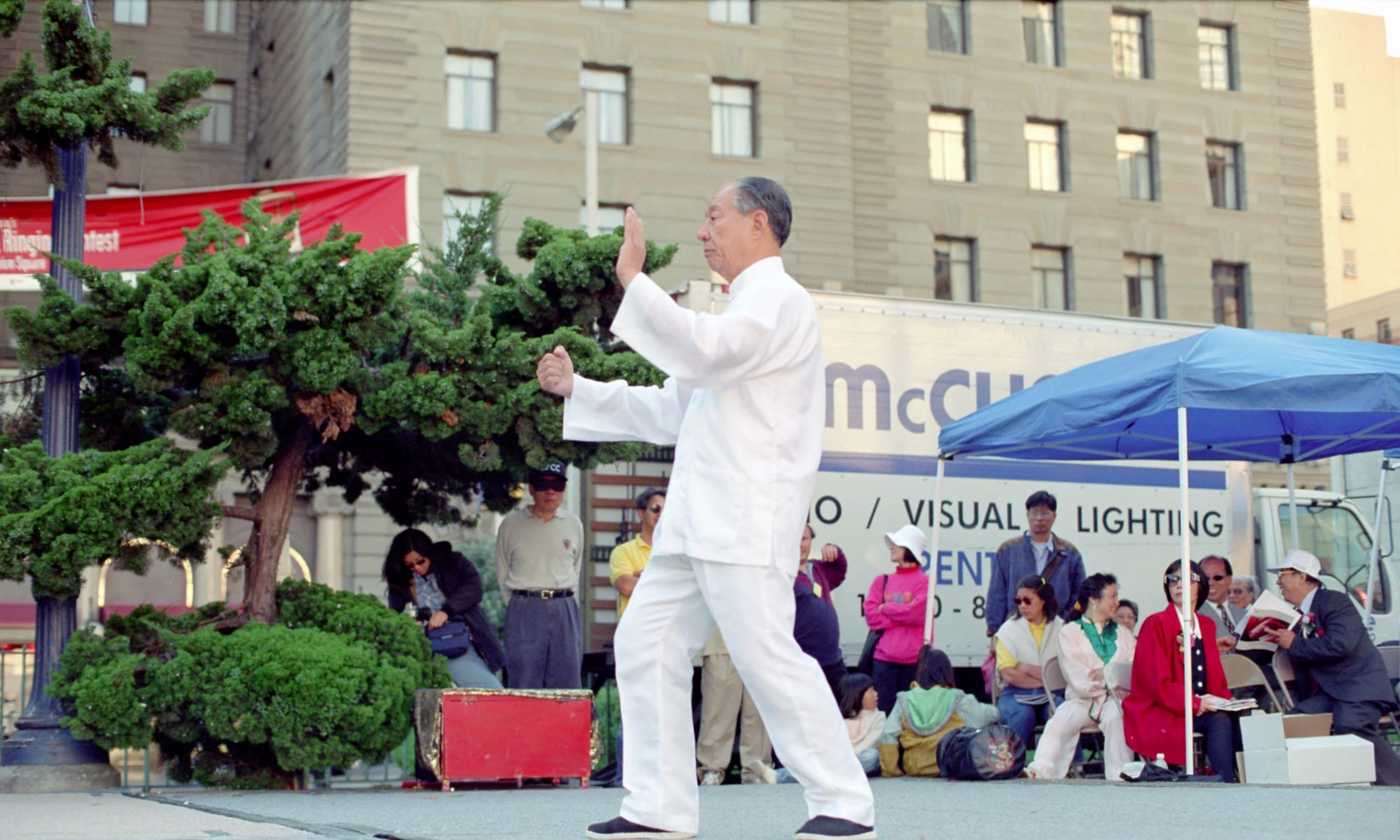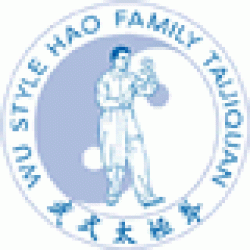What’s tai chi?
- The short answer is: a 300+ year old martial art that is greatly beneficial to the practitioners’ health.
- The correct name for tai chi as a martial art — which is what we’re solely about here — should be tai chi boxing. Tai chi in Chinese means supreme ultimate literally, and is a term used in Chinese philosophy to describe what some believe to be the beginning state of the universe: a state of nothing but energy mass. Out of this energy mass comes the two states of yin and yang, which further develop into states of four, eight, etc., and eventually into the complex world that we’re in right now.
- Note that the major relevance of tai chi as a philosophical concept and tai chi as a martial art is probably only in that tai chi boxing is trained around the concept of yin and yang. In general, bones are yang and muscles are yin. In addition, the practitioner should know very clearly which parts of his body is yang and which part is yin throughout the movement, which changes dynamically throughout.
How long should one practice everyday in order to make progress in tai chi?
- For casual learners or busy people, we recommend daily practices of 20 minutes in order to reap the benefits of better health. The practice content could be either doing entire forms or simply doing the first two moves of the 49 forms.
- For people having more time, we recommend daily practices of one hour.
- For people who are into more traditional and rigorous trainings, for both health benefits and martial arts applications, we recommend 2 hours or more daily practices.
These can be done in early morning or at night, preferably not empty-stomached.
[According to Master Liu, Grand Master Hao Shaoru used to train for more than 10 hours a day since his childhood. Master Liu himself used to go to Hao for private tutoring 3 times a week for 5 years in the beginning, and he trained for 4-5 hours each day himself. Master Liu also observed that for those 5 years, Hao never repeated himself in the materials he taught. — Ed.]
How long does it take to learn Wu (Hao) tai chi?
Ideally (i.e., with persistent practice and under proper guidance) one should achieve basic level of mastery in 3 years (see the next FAQ below on the different stages of tai chi learning). Note that this is already fast by all accounts. It’s probably unrealistic to expect to build up a solid foundation of any tai chi styles in less than 3 years. Also note that simply learning the forms (which can be undertaken in a few months) without understanding the internal requirements amounts to not much more than learning some relaxation exercises, not the true tai chi. As Master Liu likes to say, “there’s no tai chi.”
What are the different stages in the learning of tai chi?
There are roughly the following stages:
- Beginning: During this period the learner is expected to learn all the forms and understand the requirements and torso methods. This stage typically lasts for a year.
- Intermediate: Here the learner focuses on learning the body coordination. This typically lasts for a year.
- Advanced I: Here Wu (Hao) style requires that the learner grasp the separation of yi (intention) and qi (energy). Starting from this stage, each person’s progress is different and no time period is set.
- Advanced II: Here Wu (Hao) style requires the learner to grasp the method of ching (Chinese for ‘clear’). It’s beyond the scope of this FAQ to go over it in detail for now.
- Advanced III: Here Wu (Hao) style requires the learner to grasp the the method of ling (Chinese for ‘agility’). Again, the detail of this is beyond the scope of this FAQ.
What are the meanings of some commonly encountered terms such as jin, qi (chi), yin and yang (as applied in tai chi), etc., in tai chi?
We’re not aware of definitive interpretations of these terms in modern parlance (say, Newtonian physics in the case of jin or biomedical science in the case of qi). Master Liu does an excellent job in explaining these terms correctly in the context of tai chi (see his introductory article), true to his Wu (Hao) lineage (see FAQ #7 below). From his experience of practicing TCM tui na, working with the tendons of the body, Master Liu also has some interesting explanations of the mechanism of jin through the inter-workings between tendons and bones.
Please also refer to Lee Scheele‘s article. It might also help to read the book The Web That Has No Weaver: Understanding Chinese Medicineby Ted J. Kaptchuk, which explains common TCM (Traditional Chinese Medicine) models of the human body, such as qi, meridians, etc., that are applicable in internal martial arts such as tai chi.
Is tai chi mostly practiced by senior citizens?
This is a (pleasant) misperception. One of the reasons tai chi has been so popular is its accessibility to people of all ages. People in our class range in age from teens to more than 80 years old. On the other hand, not unlike any other sports such as tennis or swimming, most famous masters started at a young age. (Master Liu started practicing tai chi at the ripe old age of late 20s and already people call him a late bloomer for his accomplishment.) One of the difference (and the attractions of tai chi), though, is most tai chi masters continue to advance in their art throughout their lifetime, unhindered by the aging process (e.g., read the interview withWu [Chien Chuan] style Grand Master Ma Yueh Liang in his 90s in Bill Moyers’ book, Healing and the Mind ).
Why is tai chi a martial art? How can people fight (which is what martial art is about, right?) with such slow motions?
This is another misperception (for anything so popular, there are bound to be many misperceptions), especially for people with no prior exposure to traditional Chinese martial arts. tai chi is first and foremost a martial art, and there’s never been the slightest doubt about this among high-level traditional Chinese martial artists (see the Bay Area Wing Chun Association link). In fact the legendary Chen style Grand Master Chen Fake (1887-1957) comes from a family that use their fighting capabilities to run security services (in the days without modern weapons). The misperception mostly comes from confusing the training of tai chi with its applications. It is also due to the fact that most modern teachings of tai chi focus on training for its health benefits, and seldom address its martial arts applications. And yes, don’t try this at home by yourself, as it’s probably true that onlytop tai chi artists know how to utilize it for fighting.
On the other hand, one of the attractions of tai chi as a martial art is its principle of leveraging the opponent’s force in fighting to achieve the goal of, to quote from one tai chi classic, “using 4 ounces [of force] to defeat 1000 pounds [of force]”. As another tai chi book says, “What’s the significance of defeating your opponent if it requires that you are stronger and bigger than he is?” And the magic of tai chi lies in defeating your opponents irrespective of their size or power, for you are always using their own power to defeat them.
What are the main contributions of the Wu (Hao) style to tai chi?
Mainly in laying down a good foundation of its theories through the founders’ studies and writings, many of which have become tai chi classics recognized by all styles. To quote from one of T’ai Chi magazine‘s FAQ’s titled “What are the t’ai chi classics“*:
…
The classics are generally referred to as: The Theory of T’ai Chi Ch’uan by Chang San Feng (Zhang Sanfeng), The Classics of T’ai Chi Ch’uan by Wong Tsung Yueh (Wang Zongyue), An Internal Explanation of the Practice of the 13 Postures by Wu Yusiang (Wu Yu Xiang), The Five Words Secrets by Li Yi Yu (Li yiyu), and Summary of the Practice of T’ai Chi Ch’uan and Push Hands by Li Yi Yu.
…
In fact the oldest (credible) classic mentioned above, The Classics of T’ai Chi Ch’uan by Wang Zongyue, was actually discovered by Wu Yuxiang’s brother, having received it from his subordinate while serving as a local government official. His subordinate tried to please him, knowing his enthusiasm for this martial art, with the scroll they discovered by chance.
*[Ed. According to tai chi scholar Gu Liuxin, tai chi writings pre-dating those of Wang Zongyue, such as those by Zhang Sanfeng, are not credible. Bold types added by the editor. ]
Is tai chi a kind of qi gong (qi training)?
The training of qi is an integral part of Wu (Hao) tai chi. In this sense tai chi is a kind of (martial arts) qi gong (training).

